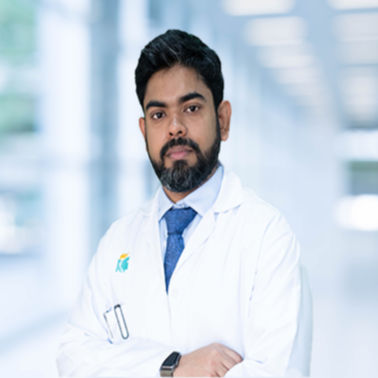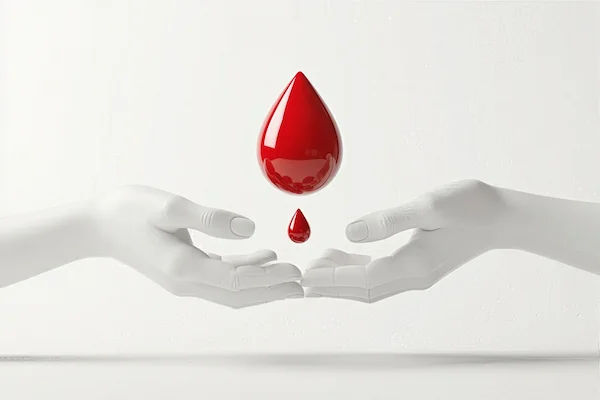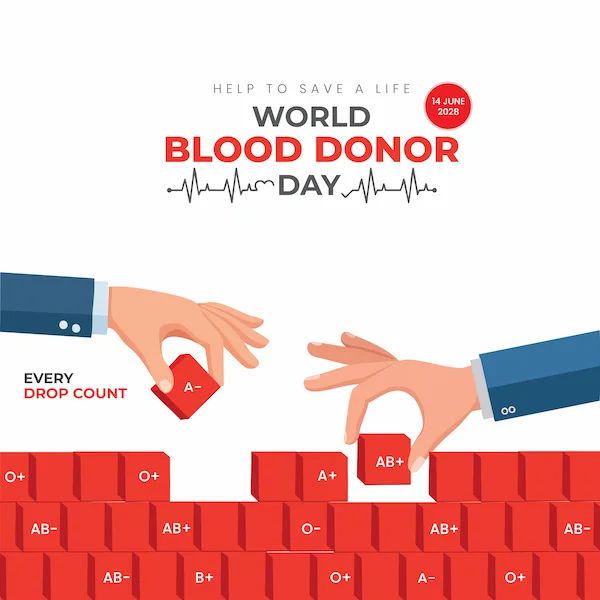Guide to World Thalassemia Day
Know about world thalassemia day, what it is, causes, diagnosis, symptoms, how to create awarness and more.

Written by Dr. M L Ezhilarasan
Reviewed by Dr. Shaik Abdul Kalam MD (Physician)
Last updated on 13th Sep, 2025

Introduction
Every year on May 8th, the global community unites to observe World Thalassemia Day, a pivotal moment dedicated to raising awareness about this inherited blood disorder. Thalassemia affects millions worldwide, posing significant medical, emotional, and financial challenges for patients and their families. It’s a day to celebrate the courage of those living with thalassemia, honour the medical professionals dedicated to their treatment, and reinforce the global commitment to preventing this condition. This comprehensive guide will walk you through everything you need to know about thalassemia, from its genetic roots and symptoms to advanced treatments and the profound importance of prevention.
What is World Thalassemia Day?
World Thalassemia Day is an international awareness day established to spread knowledge about thalassemia, support those affected by it, and promote actions that can prevent it. It is a call to action for governments, health organisations, and the public to prioritise this often-overlooked health issue.
Consult an Oncologist for Personalised Advice
The History and Origin of the Day
The day was first established in 1994 by Panos Englezos, the founder of the Thalassemia International Federation (TIF), in memory of his son George and other patients who fought bravely against the disease. May 8th was chosen to commemorate the struggle of the patients and their families. The TIF, along with its associated member organisations, now spearheads global events, educational campaigns, and advocacy efforts on this day to highlight the ongoing needs and advancements in thalassemia care.
The Theme for World Thalassemia Day 2024
Each year, a specific theme is chosen to focus efforts. The theme for 2024 is "Empowering Lives, Embracing Progress: Ensuring Equitable and Accessible Thalassemia Treatment for All." This theme underscores the critical need to bridge the gap in healthcare access, ensuring that every patient, regardless of geography or economic status, receives the standard of care they deserve, including novel therapies and comprehensive support.
Understanding Thalassemia: More Than Just Anaemia
Thalassemia is not simply a case of "low iron." It is a group of inherited blood disorders characterised by the body's inability to produce adequate, normal haemoglobin—the protein in red blood cells that carries oxygen. This leads to the destruction of a large number of red blood cells, causing chronic anaemia.
What Causes Thalassemia? (The Genetics Explained)
Thalassemia is caused by mutations in the DNA of cells that make haemoglobin. These mutations are passed from parents to children. If both parents are carriers of a thalassemia trait, there is a significant chance their child could be born with a major form of the disease. It is a classic example of an autosomal recessive genetic disorder.
Types of Thalassemia: Alpha vs. Beta
The two main types are defined by which part of the haemoglobin molecule is affected: the alpha globin chain or the beta globin chain.
Thalassemia Minor (Trait)
This occurs when a person inherits one mutated gene. People with the thalassemia minor trait are typically carriers and are usually asymptomatic or have very mild anaemia. They lead normal, healthy lives but must be aware of their carrier status for family planning.
Thalassemia Intermedia
This form is clinically significant and represents a moderate severity. Patients with thalassemia intermedia have anaemia that may require occasional blood transfusions, especially during periods of illness or stress.
Thalassemia Major (Cooley's Anaemia)
This is the most severe form. A child born with beta thalassemia major is healthy at birth but develops severe anaemia within the first two years of life. It is a serious condition requiring lifelong regular blood transfusions and extensive medical care.
Recognising the Signs: Symptoms of Thalassemia
Symptoms vary greatly depending on the type and severity of the disorder.
Symptoms in Children and Adults
- For thalassemia major, symptoms in infants appear by 6 months and include:
- Paleness and lethargy
- Poor appetite and slow growth
- Jaundice (yellowing of the skin and eyes)
- Facial bone deformities in severe, untreated cases
- Abdominal swelling due to an enlarged spleen and liver
For thalassemia minor or trait, there are often no symptoms, or one might experience mild, persistent anemia that doesn't respond to iron supplements.
When to See a Doctor
If your child shows signs of severe anaemia, delayed growth, or facial bone changes, it is crucial to seek immediate medical evaluation. For adults with a family history of thalassemia or from high-prevalence regions, preconception genetic counselling is highly recommended. If you are planning a pregnancy and have a known family history of blood disorders, consulting a genetic specialist online with Apollo24|7 can provide clarity and guidance on the necessary
screening steps.
How is Thalassemia Diagnosed?
Early and accurate diagnosis is the cornerstone of effective management.
Key Diagnostic Tests
- Complete Blood Count (CBC): This is often the first test, revealing low haemoglobin and smaller, paler red blood cells than normal.
- Haemoglobin Electrophoresis: This is the definitive test that identifies the different types of haemoglobin in the blood, confirming the diagnosis of thalassemia and distinguishing it from other anaemias like iron deficiency.
Get Your Symptoms Assessed
The Role of Genetic Testing and Counselling
- Genetic testing can identify the specific mutations responsible for thalassemia. This is vital for:
- Confirming a diagnosis.
- Identifying carriers before marriage or pregnancy.
- Prenatal Diagnosis: Procedures like chorionic villus sampling (CVS) or amniocentesis can determine if a fetus is affected. Apollo24|7 offers convenient home collection for essential tests like CBC and HbA1c, making initial screening accessible and stress-free.
Living with Thalassemia: Treatment and Management
While there is no universal cure for all types, modern treatment allows individuals to live longer, healthier lives.
Standard Treatment: Blood Transfusions and Iron Chelation Therapy
Regular blood transfusions are the lifeline for those with thalassemia major. However, these transfusions lead to a
dangerous buildup of iron in the body (iron overload), which can damage the heart, liver, and other organs. Iron chelation therapy involves using medications (oral or subcutaneous) to remove excess iron from the body.
Advanced Treatment: Bone Marrow Transplant (BMT)
A bone marrow transplant (or stem cell transplant) from a compatible donor, usually a sibling, is currently the only potential cure for thalassemia. However, it is a high-risk procedure and not suitable for everyone due to the challenges of finding a matched donor and the associated risks.
The Importance of a Holistic Care Approach
Management extends beyond transfusions. It includes:
- Regular monitoring of the heart, liver, and endocrine function.
- A tailored diet low in iron.
- Vaccinations to prevent infections.
- Psychological support to address the emotional toll of a chronic illness.
Prevention is Key: The Power of Screening
Prevention through carrier screening is the most effective strategy to reduce the incidence of thalassemia major.
Who Should Get Screened for Thalassemia?
Screening is highly recommended for:
- Individuals with a family history of thalassemia.
- Couples planning to have children, especially in high-prevalence regions like the Mediterranean, the Middle East, South Asia, and Africa.
- Anyone with unexplained chronic anaemia.
Pre-Marital and Prenatal Screening Importance
Pre-marital screening allows couples to understand their carrier status and the risks for their future children. Prenatal screening can diagnose the condition in the womb, allowing parents to make informed decisions and prepare for the necessary medical care immediately after birth.
The Emotional and Social Journey
A thalassemia diagnosis impacts the entire family emotionally and socially.
Supporting a Child with Thalassemia
It involves managing frequent hospital visits, explaining the condition to the child, and helping them lead as normal a life as possible. Connecting with other families through support groups can be incredibly beneficial.
Building a Support System
No one should navigate this journey alone. Support from family, friends, patient advocacy groups, and mental health professionals is crucial for resilience and well-being.
How You Can Make a Difference
Participating in World Thalassemia Day Events
Look for local walks, seminars, and health camps organised by hospitals and NGOs on May 8th. Participate and show your support.
Spreading Awareness and Debunking Myths
Use your voice on social media to share factual information. Debunk common myths, such as the misconception that thalassemia is contagious.
The Gift of Life: Becoming a Blood Donor
One of the most direct ways to help is by becoming a regular blood donor. Patients with thalassemia major rely on a constant, safe supply of blood to survive. Your donation can literally save a life.
Conclusion
World Thalassemia Day is more than a date on the calendar; it is a global movement fueled by hope, resilience, and the relentless pursuit of better health outcomes. From understanding the genetic causes and recognising symptoms to advocating for widespread screening and celebrating medical advancements, every action counts. While the journey for those living with thalassemia is challenging, it is one they do not walk alone. Through continued awareness, compassionate support, and scientific progress, we can envision a future where the burden of this disease is significantly lifted.
Consult an Oncologist for Personalised Advice
Consult an Oncologist for Personalised Advice

Dr. Rupam Manna
Radiation Specialist Oncologist
4 Years • MBBS MD(RADIO THERAPY)
Barasat
Diab-Eat-Ease, Barasat

Dr Gowshikk Rajkumar
Oncologist
10 Years • MBBS, DMRT, DNB in Radiation oncology
Bengaluru
Apollo Clinic, JP nagar, Bengaluru

Dr. Sanchayan Mandal
Medical Oncologist
17 Years • MBBS, DrNB( MEDICAL ONCOLOGY), DNB (RADIOTHERAPY),ECMO. PDCR. ASCO
Kolkata
MCR SUPER SPECIALITY POLY CLINIC & PATHOLOGY, Kolkata

Dr Supratim Bhattacharyya
Surgical Oncologist
11 Years • MBBS,MS,Mch(Surgical Oncology),Fellowship in Minimally Invasive GI Surgical Oncology and Robotic Surgery
Kolkata
Apollo Multispeciality Hospitals , Kolkata, Kolkata
(25+ Patients)

Dr Devashish Tripathi
Radiation Specialist Oncologist
20 Years • MBBS, PLAB, MRCP (UK)- General Medicine, FRCR (Oncology), Certificate of Completion of Training (CCT)- Clinical Oncology
Delhi
Apollo Hospitals Indraprastha, Delhi
Consult an Oncologist for Personalised Advice

Dr. Rupam Manna
Radiation Specialist Oncologist
4 Years • MBBS MD(RADIO THERAPY)
Barasat
Diab-Eat-Ease, Barasat

Dr Gowshikk Rajkumar
Oncologist
10 Years • MBBS, DMRT, DNB in Radiation oncology
Bengaluru
Apollo Clinic, JP nagar, Bengaluru

Dr. Sanchayan Mandal
Medical Oncologist
17 Years • MBBS, DrNB( MEDICAL ONCOLOGY), DNB (RADIOTHERAPY),ECMO. PDCR. ASCO
Kolkata
MCR SUPER SPECIALITY POLY CLINIC & PATHOLOGY, Kolkata

Dr Supratim Bhattacharyya
Surgical Oncologist
11 Years • MBBS,MS,Mch(Surgical Oncology),Fellowship in Minimally Invasive GI Surgical Oncology and Robotic Surgery
Kolkata
Apollo Multispeciality Hospitals , Kolkata, Kolkata
(25+ Patients)

Dr Devashish Tripathi
Radiation Specialist Oncologist
20 Years • MBBS, PLAB, MRCP (UK)- General Medicine, FRCR (Oncology), Certificate of Completion of Training (CCT)- Clinical Oncology
Delhi
Apollo Hospitals Indraprastha, Delhi
More articles from Thalassemia
Frequently Asked Questions
1. Is thalassemia curable?
For selected patients, a bone marrow transplant can be a cure. However, for most, it is a lifelong condition managed with regular treatment. Gene therapy is also emerging as a promising future treatment option.
2. Can two people with thalassemia minor get married?
Yes, they can. However, they should be aware that there is a 25% chance with each pregnancy of having a child with thalassemia major. They must seek genetic counseling before planning a family.
3. What is the life expectancy of a thalassemia major patient?
With modern treatment methods like regular transfusions and proper iron chelation, life expectancy has significantly improved. Many patients now live well into their 50s, 60s, and beyond.
4. Does thalassemia minor require treatment?
Typically, no. Individuals with thalassemia minor (trait) usually require no treatment and lead normal lives. They should, however, avoid taking iron supplements unless a doctor specifically recommends it for a separate reason.
5. How is thalassemia different from iron deficiency anemia?
While both cause anemia, they are fundamentally different. Iron deficiency is due to a lack of iron and is often dietary. Thalassemia is a genetic disorder where the body cannot make enough functional hemoglobin. Taking iron supplements for thalassemia can be harmful if not needed.



.webp)

